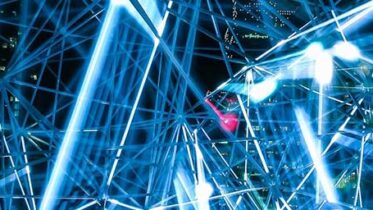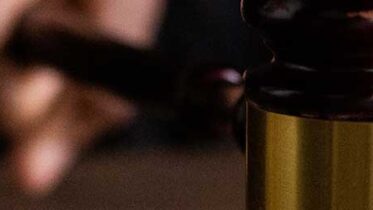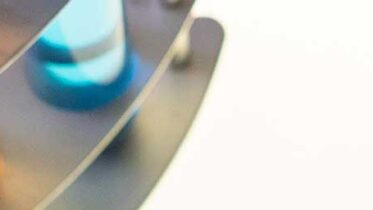How and why to protect algorithms and software
- 14 January 2022
- Articles
Algorithm developers, programmers, and other software creators often ask themselves these questions: can software be protected? Should I worry about protecting it? What is that for?
Without a doubt, we should protect these creations in order to exploit them in the market without worrying that third parties may exploit them and even claim their ownership. Protection through the different ways Intellectual Property offers also helps us make profitable these creations, for example, by granting licenses of use to third parties.
But the big and first question is: can software or an algorithm be protected? The answer is yes, and to do so, we should analyze the different types of protection into which software or an algorithm might fit.
Software Patent
There is a tendency to assert that software is not patentable; however, our smartphones have thousands of patents inside them. The Spanish Patent Law, in Article 4, considers that computer programs are not patentable. Nevertheless, if we refer to computer-implemented inventions and the rest of the patentability requirements are fulfilled, we could obtain patent protection.
The difficulty lies in fulfilling the remaining requirements a patent should have, like novelty, inventive step, and industrial applicability, which adds the technical character for countries belonging to the European Patent Convention, i.e., that the invention solves a technical problem. In these requirements, we find the majority of obstacles to applying for a patent.
In addition, each Intellectual Property Office has its practice in this regard. There is a false belief that the US Patent Office is more permissive when admitting software patents. In fact, since 2014 and after the “Alice Corp. v. CLS Bank” judgment, the requirements of US patent examiners have been tightened.
In any case, the advantages of protecting software by patent are clear. This figure grants the right to exclusive exploitation of the invention to its holder for 20 years. This time is more than sufficient to exploit technologies that are constantly advancing.
On the contrary, another series of factors may lead us to choose alternatives to the patent to protect software. For example, we should consider that all patent applications are made public 18 months after their filing, with the consequent disclosure of certain strategic aspects of the application. In addition, the geographical nature of patents means that rights are obtained only in the countries where they are granted, which implies high costs if we need broad geographical protection.
Copyright or Intellectual Property Rights to protect software
Intellectual property rights grant the holder the right to reproduce, distribute and transform the work in question.
Spanish Intellectual Property Law defines computer programs as “any sequence of instructions or indications intended to be used, directly or indirectly, in a computer system to perform a function or task or to obtain a specific result, whatever its form of expression and fixation.” Therefore, it can be concluded that this Law protects the source code by considering it a work.
In addition, the creator of the program is considered its author and holder of intellectual property rights. Therefore, when a company hires a software developer for creating a program, it should contractually state the assignment of the exploitation rights in favor of the company.
We should bear in mind that the only that protects Intellectual Property in these cases is the code. Therefore, if a third party creates a software with similar functionalities to another one, it does not necessarily have to be considered that these rights are infringed.
Nevertheless, this formula has significant advantages, such as international protection of the code, without the need to apply for the rights before any patent and trademark office; it would be enough with the accreditation of its authorship. In this sense, technologies, like Blockchain, help us accredit the authorship of a work duly if necessary.
This authorship can also be declared through the Intellectual Property Registry. But this is a merely declarative registry, and it demands numerous requirements, which usually pose barriers for rights holders. For example, one of them is the assignment, before a notary public, of the intellectual property rights of the software creators -who are typically several and not always with a direct employment relationship with the company. These requirements hinder the expedite of the process, which is essential when talking about software and technologies that evolve as fast as software and algorithms.
As an alternative to these traditional evidence means, there are others, such as certification of evidence from digital files through Blockchain. In ClarkeModet, we have a proprietary solution to certify any intangible asset, such as software or an algorithm. Our platform enables us to certify the authorship and, therefore, the ownership of the rights. It is an expedited and secure system that helps us certify authorship in less than a minute without requiring the file to exit our organization.
This evidentiary means applied to this type of asset is the most recommended due to its expedience, versatility, and security.
Software or algorithm as a Business Secret
Since 2019, in Spain, there has been a Business Secret Law that guarantees the protection through this legal figure of any information or knowledge that meets the requirements to be considered as such.
To consider an algorithm or software as a trade secret, we should first consider the confidentiality or secrecy of the software or algorithm itself. That implies that if the software’s source code is published, it can never be considered a business secret since it has already been disclosed. Therefore, our software must be encrypted so that it cannot be reproduced by reverse engineering when it is on the market.
This secrecy does not prevent the source code or the software itself from being communicated to third parties, but it should be considered that third parties should sign non-disclosure agreements (NDAs).
Furthermore, other legal and technical measures should be adopted for the software or algorithm to be considered secret. For example, the clauses that should be signed by employees who have access to it and internal training and policies in this regard, all of which are particularly relevant -mainly once employees finish their employment relationship with the company. Measures should also be implemented to prevent access to the secret in some instances, or to limit it, secure storage, etc.
Finally, to argue the existence of a business secret, it should be formally identified as such. Usually, companies turn to the notary to make the notarial filing of business secrets, with the disadvantages mentioned above related to the lack of immediacy of the process and high costs associated with this method.
In this sense, although these traditional means are perfectly valid, we can find other more expedited and secure alternatives. Here, Blockchain appears again. It is a technology, as mentioned above, that will allow us to certify the files of business secrets without those exiting the secret’ owner company and with the expediency already mentioned.
In any case, the main advantage of protecting software through business secrets is that it will allow us to take actions, such as cessation, prohibition to manufacture or trade, etc., against third parties infringing Trade Secret Law.
We should consider that a business secret will be incompatible with a software patent from the time the patent was published, as long as the source code was developed in the patent specification. However, it will be compatible during the whole patent application process. Both can coexist for greater and interesting protection.
Conclusion: Which is the best way to protect software and algorithms?
After analyzing the different forms of protection, the most important recommendation is to have an expert helping us to analyze which option or combination of options is the most suitable for protecting software in each case.
In any case, and as we have seen, we can always count on intellectual property rights, which are not incompatible with other rights, so it is important that the first measure to adopt is to have evidence of the authorship of the software or algorithm.
It is also essential to pay special attention to contractual relationships with third parties, whether with the software developers or with potential licensees of the software.
Finally, we should take advantage of all the benefits that today’s technology offers us to deal with the process for software protection. As we have seen, Blockchain is an optimal tool for generating evidence in the simplest, expedite, and secure way and with all the guarantees.
Contact us if you would like to know all the advantages of Blockchain to protect your software or algorithms or explore other protection formulas.










